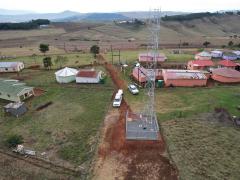As South Africa grapples with high unemployment and persistent skills mismatches, a powerful ally is emerging in the quest for economic transformation: artificial intelligence.
In this two-part series, Dr Chris Blair, Group Director at 21st Century, explores how AI can be strategically embedded into workforce planning to address the country’s most pressing labour challenges.
Part 1 discusses the transformative potential of AI in talent acquisition and process optimisation—offering real-world examples from leading South African organisations already reaping the benefits.
The integration of AI into workforce planning is revolutionising how organisations prepare for the demands of the future. In South Africa, where unemployment stands at 33% (Stats SA, 2024) and skills mismatches persist, AI presents a transformative opportunity to align workforce capabilities with economic needs. By leveraging AI for talent acquisition, process optimisation, upskilling, and structural alignment, South African organisations can address unemployment, inequality, and inefficiencies across the value chain.
This article, grounded in peer-reviewed academic studies, examines how AI can be integrated into workforce planning, providing practical examples tailored to the South African context. Part 1 focuses on talent acquisition and process optimisation, while Part 2, to be published next week, will explore upskilling, workforce structures, and human resource challenges.
The South African Workforce Context
South Africa’s workforce faces significant challenges, including high unemployment, a youth unemployment rate exceeding 60%, and persistent skills shortages (Stats SA, 2024; Bhorat et al., 2020). The global economy is shifting towards digitalisation, with industries such as mining, retail, and financial services increasingly adopting AI-driven technologies (Schwab, 2019). Yet, only 22% of workers possess intermediate or advanced digital skills, exacerbating the skills gap (OECD, 2020). Historical inequalities further complicate workforce planning, with Black women facing unemployment rates of 40% (Stats SA, 2024). AI can bridge these gaps by enabling data-driven strategies to identify, develop, and deploy skills, fostering inclusive growth.
AI in Workforce Planning: Key Applications
Talent Acquisition and Skills Matching
AI-powered recruitment platforms streamline talent acquisition by matching candidates’ skills to job requirements with high accuracy. Research indicates that AI can reduce hiring biases by up to 30% when algorithms are designed to prioritise skills over demographic factors (Dastin, 2018). In South Africa, where affirmative action and employment equity are critical, AI can ensure fairer hiring by anonymising candidate data and focusing on competencies.
Standard Bank, one of South Africa’s largest financial institutions, implemented an AI-driven recruitment platform in 2022 to address skills shortages in data analytics and cybersecurity. Using a tool similar to IBM Watson Recruitment, the bank analysed candidates’ qualifications, certifications, and informal skills gained through online courses or freelance work. This approach enabled Standard Bank to identify talent from underrepresented groups, such as Black graduates from rural universities, reducing hiring time by 25% and improving diversity metrics (Standard Bank, 2023). The platform also integrated with South Africa’s Employment Equity Act requirements, ensuring compliance with affirmative action goals.
South African organisations should adopt AI-driven recruitment platforms tailored to local contexts. These platforms must be trained on diverse datasets, including informal qualifications and non-traditional career paths, to tap into underrepresented talent pools like rural youth or informal sector workers. Partnerships with platforms like Pnet or Career Junction can enhance local relevance.
Process Optimisation Across the Value Chain
AI enhances efficiency across the organisational value chain by automating repetitive tasks, improving decision-making, and reducing costs. In South Africa’s mining sector, AI-driven predictive maintenance reduces equipment downtime by 15–20% (McKinsey, 2021). In retail, AI optimises supply chain management by forecasting demand and minimising waste (Chui et al., 2018).
Anglo American, a leading South African mining company, deployed AI-powered predictive maintenance systems at its Kumba Iron Ore operations. By analysing sensor data from mining equipment, the AI system predicted maintenance needs, reducing unplanned downtime by 18% and saving millions in operational costs (Anglo American, 2022). At the macro level, this aligned with South Africa’s National Development Plan 2030 by enhancing productivity in a key economic sector. At the micro level, the system optimised workforce allocation, allowing technicians to focus on high-value tasks rather than routine checks.
In the retail sector, Shoprite, South Africa’s largest supermarket chain, implemented an AI-driven supply chain management system in 2023. Using a platform similar to SAP Integrated Business Planning, Shoprite forecasted demand for perishable goods across its 2,900 stores, reducing food waste by 12% and improving stock availability (Shoprite Holdings, 2023). This optimisation required upskilling employees to interpret AI-generated insights, highlighting the need for integrated workforce training.
South African organisations should deploy sector-specific AI tools for process optimisation, such as predictive maintenance in mining or demand forecasting in retail. Collaboration with government and SETAs can align these tools with national skills development initiatives, ensuring macro-level coherence. Training programmes should accompany AI adoption to equip workers with data interpretation skills.
Looking Ahead
Part 1 has outlined how AI can revolutionise talent acquisition and process optimisation in South Africa’s workforce planning. Next week, Part 2 will explore how AI supports upskilling, optimises workforce structures, and addresses human resource challenges such as inequality, workforce anxiety, and data privacy. By integrating these strategies, South Africa can build a workforce ready for the future.
This article is based on research conducted by Dr Chris Blair of 21st Century, one of the largest remuneration and HR consultancies in Africa. Please contact us at info@21century.co.za for any further information.
Written by:
Dr Chris Blair, GROUP DIRECTOR of 21st Century, cblair@21century.co.za
B.Sc. Chem. Eng., MBA – Leadership & Sustainability, PhD – Leadership & Management














